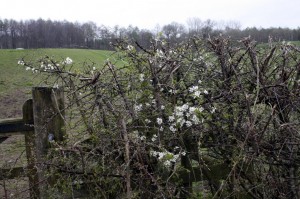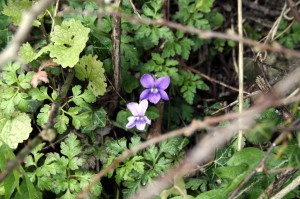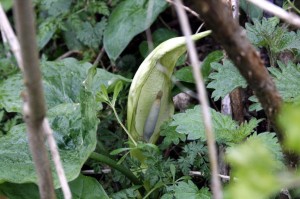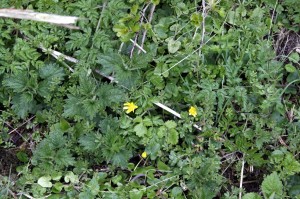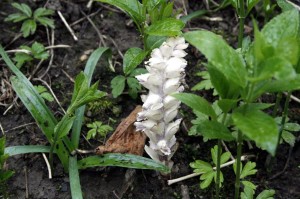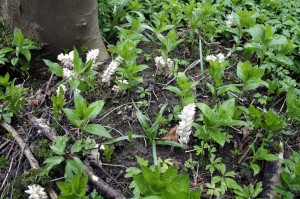Still no luck convincing the family that a wet trump around some two-thousand-year-old stone circles is what Easter should be all about. Instead of this we made a trip to Low Sizergh Barn. As this is an organic farm, there was a great biodiversity to be had in the field boundaries and woodland.
Thought this was the magickal Hawthorn or May at first as in “Don’t cast a clout till May be out” which is what my Granny used to say, but that is later and the flowers emerge after the leaves. This one has to be Blackthorn (Prunus spinosa).
These Wood Anemones (Anemone nemorosa) are a little battered by rain which makes them a bit hard to identify in the photo but not in real life.
Common Dog-Violet (Viola riviniana)
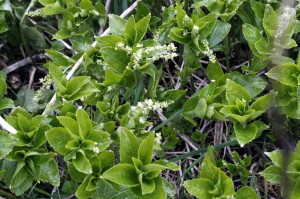
I feel like I should know this one but I don't - it's all over the woods and hedgerows here at the moment
UPDATE after Rachel’s comment (see below): Dog’s Mercury Mercurialis perennis
I got very excited by the next discovery, hanging out damply in some woodland we past. At first I thought that it was some flower left over from last year because it looked so bleached and dead but on closer inspection, I’m pretty sure it is some sort of Broomrape (Orobanche). I’ve always wanted to find one of these fascinating plants that above-ground, consist just of an inflorescence and totally lacking in green chlorophyll, extracts all it needs from its host, being a parasite. This leads to all sorts of varieties, each variety bound to a single host. Looking quickly on the Internet, I was unable to identify this beautiful, white, ghostly variety and I’m not entirely sure what it was parasitising, there were a number of candidates as you can see below.
UPDATE after Rachel’s comment (see below): It is in the Orobanche family (Orobanchaceae) but a different genus – Rachel, who works at Low Sizergh Barn and should know, identifies this as Common Toothwort (Lathraea squamaria), which as she says, is parasitic on the Hazel in their woodland.
I was introduced to Ransoms or Wild Garlic (Allium ursinum) in the woods of Treptower Park and Plänterwald by our friend the Homeopath Thomas Bochmann and he gave me the hint to make a pesto out of the garlicky young leaves before they set flower early in the season and don’t taste as delicate. Ruby has collected some with me before but doesn’t remember but was a very enthusiastic gatherer.
She ate so much she got a green tongue, much to her delight.

